• XXXX •
李建林1( ), 梅岩竹1(
), 梅岩竹1( ), 王茜1, 姜晓霞2, 李笑竹3
), 王茜1, 姜晓霞2, 李笑竹3
收稿日期:2025-06-27
修回日期:2025-07-22
通讯作者:
梅岩竹
E-mail:dkyljl@163.com;myz@163.com
作者简介:李建林(1976—),男,博士,教授,储能技术,dkyljl@163.com;
基金资助:
Jianlin LI1( ), Yanzhu MEI1(
), Yanzhu MEI1( ), Qian WANG1, Xiaoxia JIANG2, Xiaozhu LI3
), Qian WANG1, Xiaoxia JIANG2, Xiaozhu LI3
Received:2025-06-27
Revised:2025-07-22
Contact:
Yanzhu MEI
E-mail:dkyljl@163.com;myz@163.com
摘要:
面对可再生能源间歇性和波动性带来的挑战,电网要求储能电池具有更大容量、更高功率。全钒液流电池(Vanadium Redox Flow Battery,VRFB)作为大容量储能装置对于大规模储能的工程应用具有重要意义,其中全钒液流电池建模研究是推动电池发展应用的关键技术支撑。文章通过对近期相关文献的探讨,介绍了VRFB的工作机理,归纳总结了VRFB的等效电路模型并对其进行了对比分析,着重介绍了VRFB零维、一维、二维及三维机理模型和数据驱动模型。对于数据驱动模型,重点分析了数据驱动建模方法和数据驱动模型不确定性量化方法,介绍了新颖的机理-数据驱动模型。基于综合分析,提出了机理-数据驱动融合模型这一发展方向及其技术路线,并给出了基于PCDNN模型的实验验证。最后在总结展望部分探讨了VRFB机理和数据驱动模型的局限性,展望了VRFB模型发展趋势。本研究为VRFB建模技术在新能源储能系统中的应用的提供思路了重要的理论参考。
中图分类号:
李建林, 梅岩竹, 王茜, 姜晓霞, 李笑竹. 全钒液流电池建模研究现状及展望[J]. 储能科学与技术, doi: 10.19799/j.cnki.2095-4239.2025.0598.
Jianlin LI, Yanzhu MEI, Qian WANG, Xiaoxia JIANG, Xiaozhu LI. Current Status of Vanadium Redox Flow Battery Modeling and Research Advances in Data-Driven Approaches[J]. Energy Storage Science and Technology, doi: 10.19799/j.cnki.2095-4239.2025.0598.
表1
几种典型的等效电路模型对比"
| 名称 | 模型结构 | 优点 | 缺点 | 典型应用场景 |
|---|---|---|---|---|
| 内阻模型 | 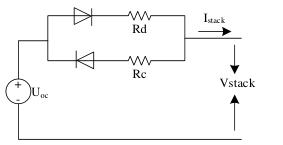 | ·结构简单、实现方便、计算快 | ·无法刻画动态行为 ·预测精度低 | ·粗略估算电压下降、能量效率 ·嵌入式系统快速仿真 |
Thevenin | 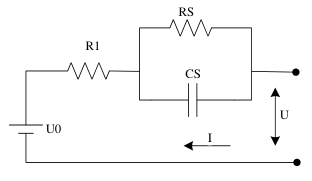 | ·可模拟短期电压响应 ·适合动态预测 ·计算效率较高 | ·参数易受温度或SOC影响,需频繁更新 ·无法模拟中长期动态行为 | ·SOC/SOH 估计 ·电压预测 ·动态工况控制快速模拟仿真 |
| PNGV | 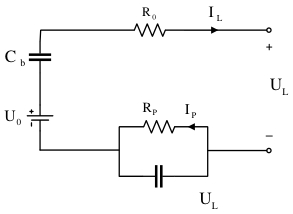 | ·在Thevenin模型基础上增加电容,能反映负载电流对容量的累积影响 | ·对长时静置后的电压恢复预测仍不足 ·未考虑扩散阻抗等电化学特性 | ·需容量衰减分析的场景 ·标准化电池测试 |
| 交流阻抗模型 | 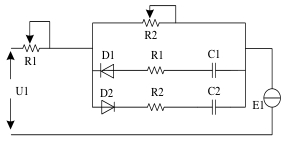 | ·通过频域阻抗谱精确解析电池内部动力学过程 ·可区分欧姆阻抗、极化阻抗和扩散阻抗 | ·需专用设备测量,无法实时在线应用 ·数据解析复杂 | ·电池老化机理研究 ·材料性能评估 ·实验室电化学分析 |
| 等效损耗模型 | 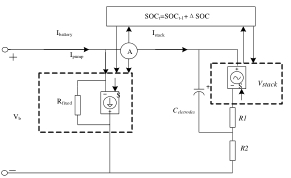 | ·极度简化,计算效率极高 ·适用于系统级仿真 ·参数易于通过充放电实验获取 | ·无法用于SOC/SOH估算或动态工况预测 ·精度较低 | ·储能电站系统级效率评估 ·粗略能量估算 ·低精度需求场景 |
| 三阶电流模型 | 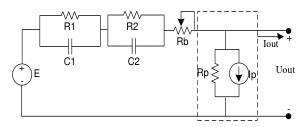 | ·在二阶RC基础上增加支路电流,可模拟自放电或漏电流现象 ·适用于长期静置电池的状态预测 | ·参数辨识复杂 ·支路电流受温度影响大,需温度补偿 ·实时性差,计算资源消耗高 | ·长期静置电池状态预测漏电流分析 ·低自放电电池设计验证 |
表 2
模型不确定性量化与处理方法 (Uncertainty Quantification Methods for Battery Models)"
| 方法名称 | 原理简介 | 应用模型与特点 |
|---|---|---|
| 蒙特卡洛方法(MC) | 多次采样输入或参数,分析输出分布 | 适用于所有模型;简单通用,适合参数不确定传播分析,但计算量较大 |
| Bootstrap 重采样 | 从数据集中重采样生成多个子集,训练多个模型,分析预测结果的方差 | 适用于数据驱动模型;易于实现,可估计模型泛化能力与不稳定性 |
| 灵敏度分析(SA) | 扰动输入变量或模型参数,评估其对输出的影响 | 适用于所有模型;可识别关键变量,支持局部或全局敏感性评估,适用于参数优化和输入选择 |
| 误差传播分析(EPA) | 将输入误差通过模型传播,计算输出误差界限 | 适用于机理模型;适合结构化模型,帮助分析参数不确定对输出精度的影响 |
| 贝叶斯神经网络(BNN) | 将模型权重视为概率分布,训练出输出均值与方差 | 理论完整,输出带置信度,适用于对预测可信度要求高的场景;训练复杂,计算开销大 |
| 深度集成学习(Ensemble) | 多个独立模型并行预测,输出均值与方差作为预测结果和不确定性估计 | 适用于数据驱动模型;鲁棒性好,抗噪能力强,能有效提高稳定性;但资源消耗大,部署成本高 |
| 高斯过程回归(GPR) | 非参数回归方法,预测输出自带均值与标准差 | 适用于数据驱动模型;理论精度高,能自然提供不确定性估计 |
| [1] | Wang W, Yuan B, Sun Q, et al. Application of energy storage in integrated energy systems—A solution to fluctuation and uncertainty of renewable energy[J]. Journal of Energy Storage, 2022, 52: 104812. |
| [2] | Soloveichik G L. Flow batteries: current status and trends[J]. Chemical reviews, 2015, 115(20): 11533-11558. |
| [3] | Skyllas-Kazacos M, Kasherman D, Hong D R, et al. Characteristics and performance of 1 kW UNSW vanadium redox battery[J]. Journal of Power Sources, 1991, 35(4): 399-404. |
| [4] | 房茂霖, 张英, 乔琳, 等. 铁铬液流电池技术的研究进展[J]. 储能科学与技术, 2022, 11(5): 1358. |
| Fang M L, ZhANG Y, QIAO L, et al. Research progress of iron-chromium flow battery technology[J]. Energy Storage Science and Technology, 2022, 11(5): 1358. | |
| [5] | 梁振飞, 王兴兴, 胡皓晨, 等. 锌溴液流电池电解液与隔膜技术研究进展[J]. 储能科学与技术, 2025, 14(2): 583. |
| LIANG Z F, WANG X X, HU H C, et al. Research progress of electrolyte and diaphragm technology for zinc-bromine flow batteries[J]. Energy Storage Science and Technology, 2025, 14(2): 583. | |
| [6] | 姚祯, 王锐, 阳雪, 等. 锌铁液流电池研究现状及展望[J]. 储能科学与技术, 2022, 11(1): 78. |
| YAO Z, WANG R, YANG X, et al. Research status and prospects of zinc-iron flow batteries[J]. Energy Storage Science and Technology, 2022, 11(1): 78. | |
| [7] | 谢志鹏,蔡定建,杨亮.锌铈液流电池研究进展[J].有色金属科学与工程,2014,5(01):42-46. |
| XIE Z P, CAI D J, YANG L. Research progress of zinc-cerium liquid flow battery[J]. 2014,5(01):42-46.. | |
| [8] | Skyllas-Kazacos M, Chakrabarti M H, Hajimolana S A, et al. Progress in flow battery research and development[J]. Journal of the electrochemical society, 2011, 158(8): R55. |
| [9] | Cunha Á, Martins J, Rodrigues N, et al. Vanadium redox flow batteries: a technology review[J]. International Journal of Energy Research, 2015, 39(7): 889-918. |
| [10] | SHAO J, LI X, MO Y, et al. Analysis of modeling and flow characteristics of vanadium redox flow battery[J]. Energy Storage Science and Technology, 2020, 9(2): 645. |
| [11] | Bogdanov S, Pugach M, Parsegov S, et al. Dynamic modeling of vanadium redox flow batteries: Practical approaches, their applications and limitations[J]. Journal of Energy Storage, 2023, 57: 106191. |
| [12] | Arévalo-Cid P, Dias P, Mendes A, et al. Redox flow batteries: a new frontier on energy storage[J]. Sustainable Energy & Fuels, 2021, 5(21): 5366-5419. |
| [13] | Guarnieri M, Mattavelli P, Petrone G, et al. Vanadium redox flow batteries: Potentials and challenges of an emerging storage technology[J]. IEEE Industrial Electronics Magazine, 2016, 10(4): 20-31. |
| [14] | Esan O C, Shi X, Pan Z, et al. Modeling and simulation of flow batteries[J]. Advanced Energy Materials, 2020, 10(31): 2000758. |
| [15] | Satola B. Bipolar plates for the vanadium redox flow battery[J]. Journal of The Electrochemical Society, 2021, 168(6): 060503. |
| [16] | Shah A A, Tangirala R, Singh R, et al. A dynamic unit cell model for the all-vanadium flow battery[J]. Journal of the Electrochemical society, 2011, 158(6): A671. |
| [17] | Blanc C, Rufer A. Multiphysics and energetic modeling of a vanadium redox flow battery[C]//2008 IEEE International Conference on Sustainable Energy Technologies. IEEE, 2008: 696-701. |
| [18] | Skyllas-Kazacos M, Goh L. Modeling of vanadium ion diffusion across the ion exchange membrane in the vanadium redox battery[J]. Journal of membrane science, 2012, 399: 43-48. |
| [19] | Pugach M, Kondratenko M, Briola S, et al. Zero dimensional dynamic model of vanadium redox flow battery cell incorporating all modes of vanadium ions crossover[J]. Applied energy, 2018, 226: 560-569. |
| [20] | Wang H, Pourmousavi S A, Li Y, et al. A new zero-dimensional dynamic model to study the capacity loss mechanism of vanadium redox flow batteries[J]. Journal of Power Sources, 2024, 603: 234428. |
| [21] | Chen C L, Yeoh H K, Chakrabarti M H. One dimensional mathematical modelling of the all-vanadium and vanadium/oxygen redox flow batteries[J]. ECS Transactions, 2015, 66(10): 1. |
| [22] | Lei Y, Zhang B W, Bai B F, et al. A transient model for vanadium redox flow batteries with bipolar membranes[J]. Journal of Power Sources, 2021, 496: 229829. |
| [23] | Cecchetti M, Toja F, Casalegno A, et al. A comprehensive experimental and modelling approach for the evaluation of cross-over fluxes in Vanadium Redox Flow Battery[J]. Journal of Energy Storage, 2023, 68: 107846. |
| [24] | Shah A A, Watt-Smith M J, Walsh F C. A dynamic performance model for redox-flow batteries involving soluble species[J]. Electrochimica Acta, 2008, 53(27): 8087-8100. |
| [25] | You D, Zhang H, Chen J. A simple model for the vanadium redox battery[J]. Electrochimica Acta, 2009, 54(27): 6827-6836. |
| [26] | Agar E, Knehr K W, Dennison C R, et al. Simulating Performance and Species Crossover in a Vanadium Redox Flow Battery using COMSOL Multiphysics[C]//Proceedings of the COMSOL Conference. 2011. |
| [27] | Chen Y, Bao J, Xu Z, et al. A hybrid analytical and numerical model for cross-over and performance decay in a unit cell vanadium redox flow battery[J]. Journal of Power Sources, 2023, 578: 233210. |
| [28] | Martinez Lopez J, Aramendia I, Fernandez-Gamiz U, et al. Computational Modeling of a 2D Vanadium Redox Flow Battery Cell[J]. JOM, 2024, 76(1): 130-140. |
| [29] | Ma X, Zhang H, Xing F. A three-dimensional model for negative half cell of the vanadium redox flow battery[J]. Electrochimica Acta, 2011, 58: 238-246. |
| [30] | Xu Q, Zhao T S, Leung P K. Numerical investigations of flow field designs for vanadium redox flow batteries[J]. Applied energy, 2013, 105: 47-56. |
| [31] | Ozgoli H A, Elyasi S, Mollazadeh M. Hydrodynamic and electrochemical modeling of vanadium redox flow battery[J]. Mechanics & Industry, 2015, 16(2): 201. |
| [32] | Wang Y, Cho S C. Analysis and three-dimensional modeling of vanadium flow batteries[J]. Journal of The Electrochemical Society, 2014, 161(9): A1200.1. |
| [33] | Ozgoli H A, Elyasi S. A transient model of vanadium redox flow battery[J]. Mechanics & Industry, 2016, 17(4): 406. |
| [34] | He Q, Yu J, Guo Z, et al. Modeling of vanadium redox flow battery and electrode optimization with different flow fields[J]. e-Prime-Advances in Electrical Engineering, Electronics and Energy, 2021, 1: 100001. |
| [35] | 郑兆烜.基于交互测度和ISCSO改进ELM的全钒液流电池SOH估计方法[D].东北电力大学,2024.DOI:10.27008/d.cnki.gdbdc.2024.000209. |
| ZHENG Z. SOH estimation method for all-vanadium flow battery based on interaction measure and improved ELM by ISCSO[D]. Northeast Electric Power University, 2024. DOI:10.27008/d.cnki.gdbdc.2024.000209. | |
| [36] | Ji C, Dai J, Zhai C, et al. A review on lithium-ion battery modeling from mechanism-based and data-driven perspectives[J]. Processes, 2024, 12(9): 1871. |
| [37] | Zheng Q, Li X, Cheng Y, et al. Development and perspective in vanadium flow battery modeling[J]. Applied energy, 2014, 132: 254-266. |
| [38] | Lucaferri V, Quercio M, Laudani A, et al. A review on battery model-based and data-driven methods for battery management systems[J]. Energies, 2023, 16(23): 7807. |
| [39] | Vilsen S B, Stroe D I. Battery state-of-health modelling by multiple linear regression[J]. Journal of Cleaner Production, 2021, 290: 125700. |
| [40] | Chen T, Morris J, Martin E. Gaussian process regression for multivariate spectroscopic calibration[J]. Chemometrics and Intelligent Laboratory Systems, 2007, 87(1): 59-71. |
| [41] | Zhao X, Jung S. Long-term capacity fade forecasting of vanadium redox flow battery with Gaussian process regression combined with informer model[J]. Journal of Power Sources, 2023, 585: 233670. |
| [42] | He Q Z, Stinis P, Tartakovsky A M. Physics-constrained deep neural network method for estimating parameters in a redox flow battery[J]. Journal of Power Sources, 2022, 528: 231147. |
| [43] | He Q Z, Fu Y, Stinis P, et al. Enhanced physics-constrained deep neural networks for modeling vanadium redox flow battery[J]. Journal of Power Sources, 2022, 542: 231807. |
| [44] | Li R, Xiong B, Zhang S, et al. A novel one dimensional convolutional neural network based data-driven vanadium redox flow battery modelling algorithm[J]. Journal of Energy Storage, 2023, 61: 106767. |
| [45] | Li R, Xiong B, Zhang S, et al. A novel data-driven vanadium redox flow battery modelling approach using the convolutional neural network[J]. Journal of Power Sources, 2023, 565: 232859. |
| [46] | Li R, Xiong B, Zhang S, et al. A novel U-Net based data-driven vanadium redox flow battery modelling approach[J]. Electrochimica Acta, 2023, 444: 141998. |
| [47] | Liu Y, Li R, Xiong B, et al. A novel vanadium redox flow battery modelling method using honey badger optimization assisted CNN-BiLSTM[J]. Journal of Power Sources, 2023, 558: 232610. |
| [48] | Chen W, Fu Y, Stinis P. Physics-informed machine learning of redox flow battery based on a two-dimensional unit cell model[J]. Journal of Power Sources, 2023, 584: 233548. |
| [49] | Cai M, Yang B, Liu Q, et al. A hybrid physics-based and data-driven approach for long-term VRFB aging prediction[J]. Journal of Control and Decision, 2025: 1-12. |
| [50] | Ma Q, Fu W, Xu J, et al. Study on the optimal double-layer electrode for a non-aqueous vanadium-iron redox flow battery using a machine learning model coupled with genetic algorithm[J]. Processes, 2023, 11(5): 1529. |
| [51] | Wang Q, Yan R, Ren L, et al. Optimizing of working conditions of vanadium redox flow battery based on artificial neural network and genetic algorithms[J]. Journal of Energy Storage, 2024, 100: 113501. |
| [52] | Ben Ahmed M, Fekih Hassen W. Optimization of a Redox-Flow Battery Simulation Model Based on a Deep Reinforcement Learning Approach[J]. Batteries, 2023, 10(1): 8. |
| [1] | 马昊远, 吴焱, 王通, 胡锦洋, 李佳, 黄钰期. 基于力-电-温度信号和CNN-BiLSTM模型的磷酸铁锂电池SOC估计[J]. 储能科学与技术, 2025, 14(7): 2865-2874. |
| [2] | 张晓慧, 杨瑞赓, 焦松坤. 基于机器学习的储能系统容量规划与需求预测研究[J]. 储能科学与技术, 2025, 14(7): 2881-2883. |
| [3] | 段永龙, 滑夏, 韩子娇, 谢冰, 胡姝博, 李爱魁. 全钒液流电池容量衰减与抑制技术研究进展[J]. 储能科学与技术, 2025, 14(6): 2540-2554. |
| [4] | 张红, 李金中, 李鑫, 张媛. 计及SOH的全钒液流电池并联控制策略[J]. 储能科学与技术, 2025, 14(6): 2442-2450. |
| [5] | 谈家宝, 王育飞, 薛花. 活塞式重力储能系统建模与性能分析[J]. 储能科学与技术, 2025, 14(6): 2383-2390. |
| [6] | 李明, 尹文良, 李勇康, 孙晨业, 陈佳佳. 多源耦合不确定性下含电氢储能的微电网低碳容量优化配置研究[J]. 储能科学与技术, 2025, 14(5): 1969-1981. |
| [7] | 史小虎, 黄怡馨, 邹涛, 袁依婷. 星形交联剂交联的磺化聚苯并咪唑膜的制备及其在全钒液流电池中的应用[J]. 储能科学与技术, 2025, 14(4): 1377-1385. |
| [8] | 石贵月, 陶海亮, 左志涛, 李靖鑫, 陈吉祥, 陈家希, 陈海生. 压缩空气储能轴流压缩机叶片应力优化方法[J]. 储能科学与技术, 2025, 14(4): 1522-1532. |
| [9] | 叶涛, 王怡君, 唐子龙, 潘国梁. 全钒液流电池电解液容量衰减及草酸恢复研究[J]. 储能科学与技术, 2025, 14(3): 1177-1186. |
| [10] | 黎涵, 于刚, 徐二树, 廖志荣, 王强, 陈晨, 星月鹏. 太阳能热发电储热系统动态建模与仿真研究[J]. 储能科学与技术, 2025, 14(3): 1234-1246. |
| [11] | 李跃林, 刘祉妤, 郭森, 刘晓君, 张蓬亮, 王程程, 梁原, 王锐. 全钒液流电池的电极结构研究进展[J]. 储能科学与技术, 2025, 14(2): 601-612. |
| [12] | 王泓, 张开悦. 全钒液流电池碳毡电极的热处理活化研究[J]. 储能科学与技术, 2025, 14(2): 488-496. |
| [13] | 陈建荣, 赵波, 赵炳洋. 考虑多控制环路影响的VSG型构网储能 dq 阻抗建模及稳定性分析[J]. 储能科学与技术, 2025, 14(1): 222-239. |
| [14] | 刘大猛, 牟雪鹏, 石博豪, 陈巨龙, 王斌, 罗晨, 钟承君, 陈思哲. 斜坡式重力储能系统机械与电气联合仿真的多软件协同建模方法[J]. 储能科学与技术, 2024, 13(9): 3266-3276. |
| [15] | 何智峰, 陶远哲, 胡泳钢, 王其聪, 杨勇. 机器学习强化的电化学阻抗谱技术及其在锂离子电池研究中的应用[J]. 储能科学与技术, 2024, 13(9): 2933-2951. |
| 阅读次数 | ||||||
|
全文 |
|
|||||
|
摘要 |
|
|||||
